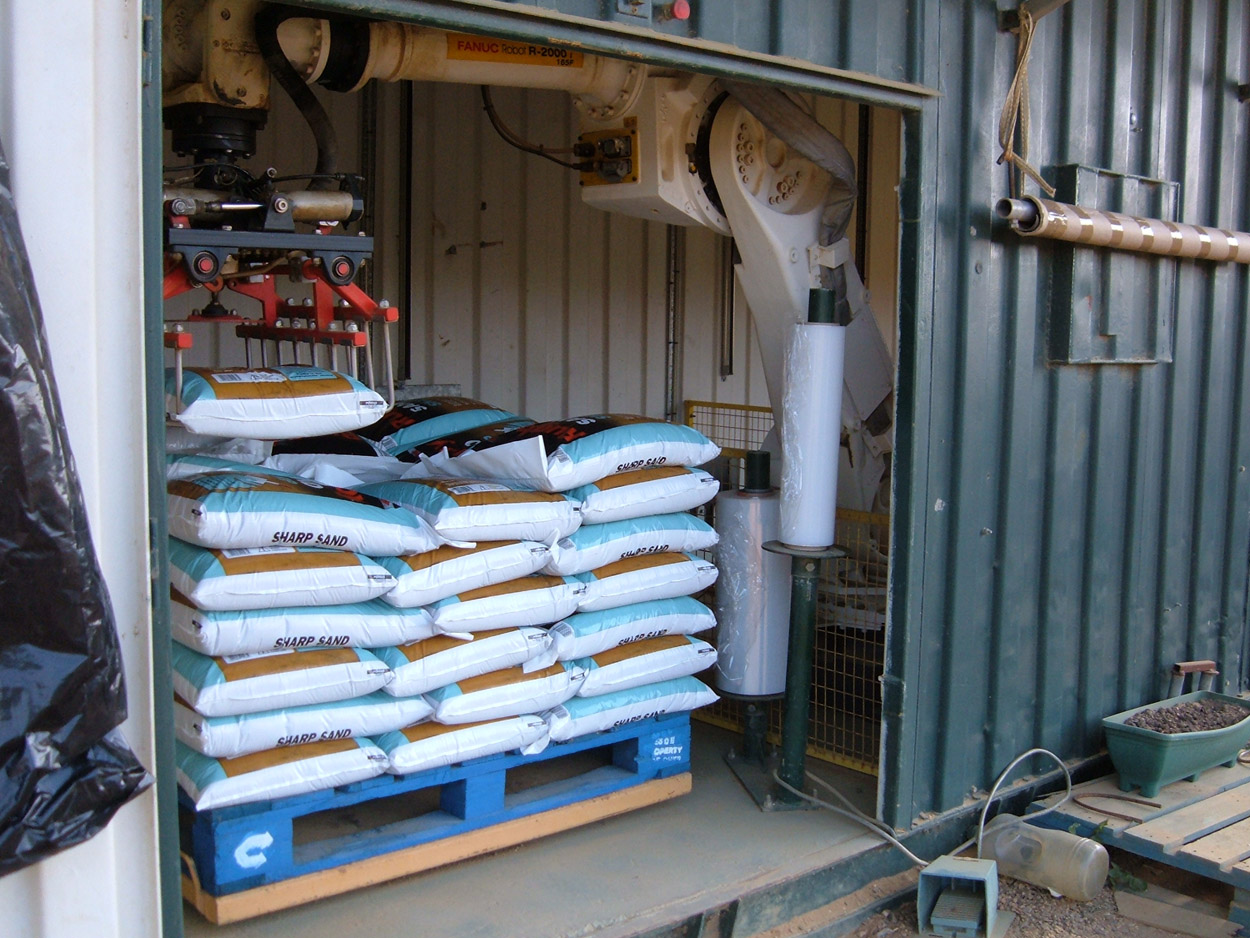Pacepacker Boxes Off Bagging At Earsham Gravels
In a custom installation thought to be the first of its kind, Pacepacker Services has built a containerised sack packing and robotic palletising line for Suffolk-based aggregates supplier Earsham Grav

The FANUC R2000 Palletising Robot The investment has not only doubled capacity and reduced reliance on manual labour, but also given Earsham Gravels a portable turnkey line that can be easily transported between quarries.
A family business, Earsham Gravels bags aggregates, from sand to gravel, shingle, limestone and granite, into plastic sacks for trade customers supplying the DIY and construction industries weighing up to 40kgs. Historically, aggregates were bagged on a manually operated line, but as the company’s customer base expanded, this became unworkable. “Health and safety lifting regulations made the manual operation extremely onerous and put pressure on employment,” explains Jim Bennett, MD of Earsham Gravels.
Earsham Gravels tasked automatic packing systems specialist Pacepacker with designing an automated line that would fit within a purpose built trailer container enabling the equipment to be transferred with ease to different locations. The kit needed to be compact enough to fit within the confined space, measuring 40 x 8 x 8ft, and robust enough to withstand the harsh quarry environment where it is situated as the aggregates are often abrasive and wet which can damage and corrode machinery.
Pacepacker built a portable turnkey cell incorporating its innovative Total Bag Control (TBC) sack closing system, its C21 sack placer a bag kicker, a bulk hopper and a weigher. Within the container, the sack placer opens the empty sacks and presents them to the aggregate specification weigher, for filling from the bulk hopper. The TBC system then takes hold of full sacks with a pair of motorised grip arms and motors toward the sealer, “As the bag top is held at all times prior to sealing, the system stabilises the bag throughout the closing process,” explains Paul Wilkinson, Pacepacker’s business development manager. “To ensure the TBC can cope with harsh conditions, all parts that come into contact with the aggregates are made from stainless steel, and the feeder uses heavy duty rubber belting.”
Following the success of the first portable turnkey cell Earsham Gravels constructed a second purpose built trailer which Pacepacker equipped with a FANUC R2000 palletising robot. Once sealed within the first container the sacks pass through a sack kicker and into the second container, where they travel to the FANUC R2000 palletising robot via a flattener conveyor with powered rollers, followed by a ‘pick’ conveyor, whose roller design and spacing facilitates picking of the sacks.
The six-axis robot loads sacks onto two pallet stations, which are rotated and wrapped before being taken away by fork lift trucks. “We specified the FANUC R2000 robot because it has a very tight working envelope – it is compact but has the reach to work the whole container,” explains Paul Wilkinson.
Earsham Gravel reports that automating the line has ramped up bagging speeds from five or six sacks per minute to nine or ten sacks per minute. “This means we’ve now got the capacity to bag up to about 140 tonnes per ten-hour day, compared with 70 or 80 tonnes previously,” explains Jim Bennett. “We also have the flexibility to further expand capacity by feeding another line into the robot.”
“Another advantage of automating the line is that we only need one operator, to take the full pallets away and put empty pallets in their place, and there is no longer any heavy lifting,” he adds. Earsham Gravels has put the portability of the line to the test and Jim Bennett confirms: “The kit can be packed up on a lorry within 30 minutes, then, once transported, can be up and running in a new location within another 30 minutes.”
CONTACT
Paul Wilkinson
Pacepacker Services Ltd
sales@pacepackerservices.com
www.pacepacker.com
+44 (0) 1371 811544
Thursday 15 May 2014 / file under Packaging | Engineering | Construction



